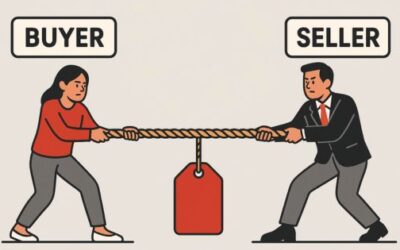Product Demos in the B2B Sales Process
Product demos and free trials seem to be the thing these days, particularly in the realm of SaaS (Software as a Service). Everyone’s itching to get their mitts on the product before making a commitment.
It’s reached a point where it’s an integral part of nearly every b2b sales cycle. Customers crave that hands-on experience. They want to get up close and personal with the product, to gauge its usability, and to see if it lives up to the hype. They want to experience what they’re going to buy, how it feels, and how complex or easy it is to use. Product demos have firmly entrenched themselves in the standard operating procedure in modern SaaS sales, and this trend isn’t showing any signs of slowing down.
A product demo or trial should be used to validate your claims as a solution and as a tool to deliver a compelling story on how your product will impact their sales organization by solving or eradicating a current problem.
However, what we’re witnessing due to this heightened demand for demos and trials is that sales professionals often miss the mark. They rush into these presentations as if they’re a pitch to sell the product, and that’s a giant mistake. Demos and trials are not showcases for the product or service, spotlighting all the fancy features and benefits, bells and whistles. That’s not their true purpose, but unfortunately, many in sales continue to misuse them in this manner, and that’s a problem.
Customer-Centric Sales Demos
A product demo or trial should be used to validate your claims as a solution and as a tool to deliver a compelling story on how your product will impact their sales organization by solving or eradicating a current problem. In simpler terms, demos and trials should be crafted as vehicles to showcase how your solution addresses their precise, immediate problems. They should never be reduced to mere displays of features and functions.
What sets them apart? Well, most trials or demos typically unfold like this: ‘Now, here’s our portal page, where your team builds modules and stores portfolios. Next, I’ll demonstrate how they can share documents.’ Yada, yada, yada! Frankly, nobody cares.
A genuine demo, on the other hand, kicks off by addressing one of the specific issues or challenges the customer or prospect shared. It goes something like this: ‘In our previous discussion, you mentioned your team’s struggle with document sharing and collaboration. In this part of the demo, we’re going to illustrate how you can simplify document sharing and enhance collaboration without disrupting your existing file structure while staying compliant with federal regulations.’
The Key To Successful Sales Demonstrations
Bad demos fixate on your product, its features, and the benefits it offers. Exceptional demos, however, zero in on the customer or prospect and the challenges they face. It’s that simple.
The most effective method to stay on course and deliver outstanding demos and trials that prioritize the customer over the product is to inquire about their evaluation criteria before conducting the demo or trial. In other words, when a prospect requests a demo, make sure to establish an agreement on what aspects they intend to assess, the method of evaluation they’ll employ, and the outcomes they hope to achieve. The essence here lies in injecting discipline and focus into the demo or trial process.
You want to understand how they’ll measure the success of the demo and how they’ll determine if the product aligns with their needs. Armed with this insight into your client’s success criteria for the demo or trial, you can tailor the experience to precisely meet their wants and NEEDs. Understanding how your prospect plans to evaluate the demo or trial prevents wasteful energy expenditure on the wrong aspects and ensures you’re aligning your pitch with their decision-making criteria.
Sales Demos Aren’t About Your Product
Don’t be in a hurry to dive into the demo, and resist the urge to turn it into a mere showcase for the product and its features. Instead, leverage the demo to showcase how it effectively resolves the real-world problems your prospect is grappling with. Transform the demo into an experience where the customer feels their troubles vanishing right before their eyes. Convey the message that implementing your product or service right now will alleviate all their pain and frustration. That’s the kind of demo that truly resonates.
Nobody cares about the bells and whistles of your product, and neither should you. The only thing that truly matters is whether it will enhance their world, and that’s precisely what the demo should emphatically answer – YES!
In the end, whatever you do, ensure you don’t mess up the demo.





0 Comments